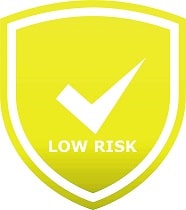Is Hemp seed Safe in Breastfeeding
Question
I am a breastfeeding mother and i want to know if it is safe to use Hemp seed? Is Hemp seed safe for nursing mother and child? Does Hemp seed extracts into breast milk? Does Hemp seed has any long term or short term side effects on infants? Can Hemp seed influence milk supply or can Hemp seed decrease milk supply in lactating mothers?
Hemp seed lactation summary

- DrLact safety Score for Hemp seed is 3 out of 8 which is considered Low Risk as per our analyses.
- A safety Score of 3 indicates that usage of Hemp seed may cause some minor side effects in breastfed baby.
- Our study of different scientific research indicates that Hemp seed may cause moderate to no side effects in lactating mother.
- Most of scientific studies and research papers declaring usage of Hemp seed low risk in breastfeeding are based on normal dosage and may not hold true for higher dosage.
- While using Hemp seed We suggest monitoring child for possible reactions. It is also important to understand that side effects vary largely based on age of breastfed child and time of medication in addition to dosage.
- Score calculated using the DrLact safety Version 1.2 model, this score ranges from 0 to 8 and measures overall safety of drug in lactation. Scores are primarily calculated using publicly available case studies, research papers, other scientific journals and publically available data.
Answer by Dr. Ru: About Hemp seed usage in lactation
Agricultural, textile or industrial hemp is a variety of Cannabis sativa with low content of Delta-9 tetrahydrocannabinol (THC). Although both are the same plant (Sawler 2015), the term “Hemp” is used for the agricultural variety with industrial uses, textiles and foodstuffs leaving the denomination “Cannabis” to the variety that is cultivated for recreational purposes. Agricultural hemp must contain less than 0.2% to 0.3% of THC to be considered legal depending on the country (Avico 1985, Leson 2001,Hemp is used on textile industry for manufacturing of fabrics, paper, insulating elements, motor fuel, paint and cosmetics, among other uses.
In human food the seeds (cannons), whole, raw or roasted and ground in the form of flour or its oil are used. In 100 grams there are 32 g of protein (all essential amino acids), 49 g of fat (practically all polyunsaturated, linoleic and linolenic acids, ω-3 and ω-6), 5 g of carbohydrates (4 g of fiber), vitamins and minerals with a total of 586 calories.In Chinese medicine it is used on the treatment of constipation (Cheng 2011) It would be advisable to garantee the origin of the seeds and the quality of supplier because there are three possible sources of higher risk with its consumption:1- Confusion at selection of plants with a higher content of THC can lead to positivity on drug testing that would result in poisoning (Fortner 1997, Lehmann 1997, Meier 1997, Alt 1998, Chinello 2016).2- A likely bacterial contamination has led to food poisoning (Willis 2009, Stöcker 2011)3- Hemp is a plant that has been used as a "soil cleaner", because of its high capacity of metal and toxin absorption. Its content in Cadmium, Zinc, Iron and other contaminants may be high (Campbell 2002, Mihoc 2012).
There is no evidence of its effectiveness on preventing and treating cardiovascular disease, diabetes, obesity, overweight and others (Kaul 2008).At latest update no published data were found on its excretion into breastmilk.Provided a reliable source is available, moderate consumption during breastfeeding would pose little or no risk.Hemp is not considered as an essential supplement whenever a healthy balanced diet is followed.
